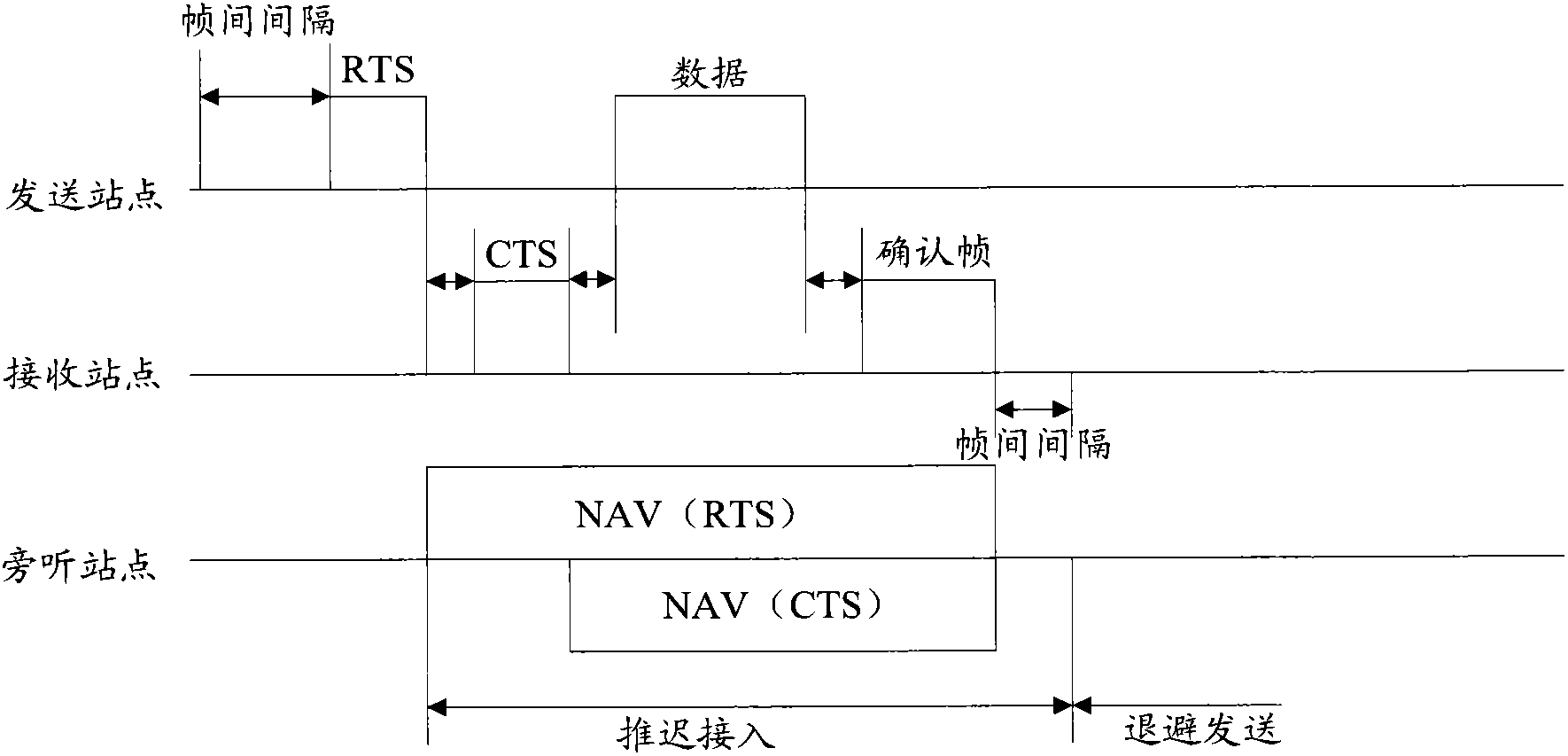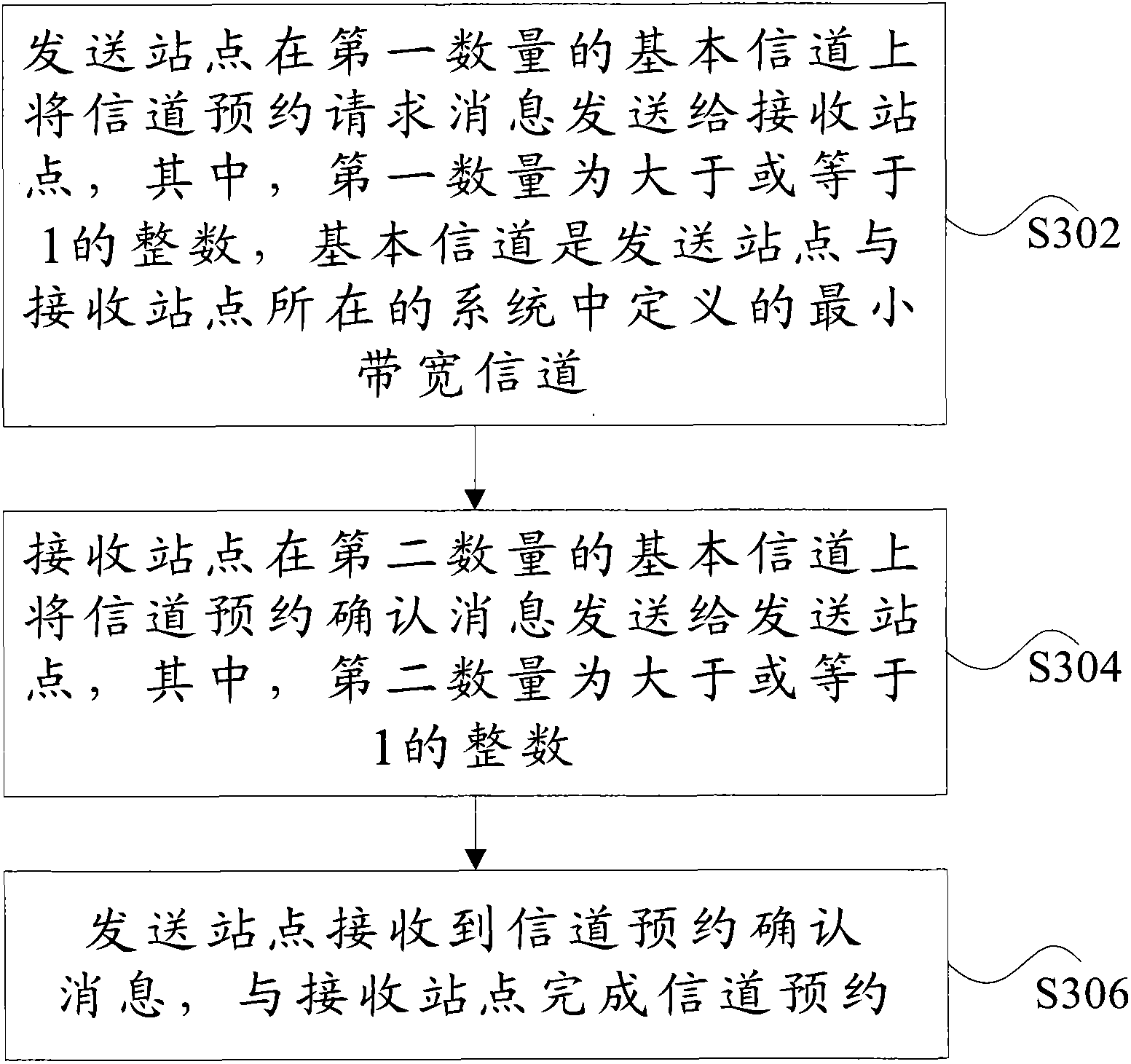Channel reservation method and system
A channel reservation and channel technology, which is applied in the field of communication, can solve the problems of data transmission interference and channel occupation of the sending site, and achieve the effect of avoiding interference
- Summary
- Abstract
- Description
- Claims
- Application Information
AI Technical Summary
Problems solved by technology
Method used
Image
Examples
Embodiment 1
[0047] In the preferred embodiment 1, the implementation of wireless channel detection through the channel reservation request message / channel reservation confirmation message mainly includes the following steps.
[0048] The AP and the STA inform each other of their supported channel bandwidth, for example, the AP supports 160 / 80 / 40 / 20MHz, and the STA supports 80 / 40 / 20MHz. Before sending data to the STA, the AP negotiates with the STA that the channel bandwidth used for current transmission is four times the basic channel bandwidth, that is, 80 MHz. The information that the AP needs to notify the STA includes at least one of the following: primary channel identification information, secondary channel identification information, and third and fourth channel identification information of the AP.
[0049] Before sending data, the AP needs to send a channel reservation request message to the STA for channel reservation. The AP detects through channel scanning whether the main ch...
Embodiment 2
[0054] The implementation of wireless channel detection in the second preferred embodiment mainly includes the following steps.
[0055] The AP and the STA inform each other of their supported channel bandwidth, for example, the AP supports 160 / 80 / 40 / 20MHz, and the STA supports 80 / 40 / 20MHz. Before sending data to the STA, the AP negotiates with the STA that the current transmission uses 80MHz. The information that the AP needs to notify the STA includes at least one of the following: primary channel identification information, secondary channel identification information, and third and fourth channel identification information of the AP.
[0056] In this embodiment, the AP uses the same method as that in the preferred embodiment 1 to send a channel reservation request message to make a channel reservation with the STA. The AP detects through channel scanning that the main channel of other BSSs around it occupies its own auxiliary channel, then the AP sends a channel reservati...
Embodiment 3
[0061] The implementation of wireless channel detection in the third preferred embodiment mainly includes the following steps.
[0062] The AP and the STA inform each other of their supported channel bandwidth, for example, the AP supports 160 / 80 / 40 / 20MHz, and the STA supports 80 / 40 / 20MHz. Before sending data to the STA, the AP negotiates with the STA that the current transmission uses 80MHz. The information that the AP needs to notify the STA includes at least one of the following: primary channel identification information, secondary channel identification information, and third and fourth channel identification information of the AP.
[0063] Before sending data, the AP sends a channel reservation request message to the STA for channel reservation. The AP scans the channel to detect whether the main channel of other BSSs around it occupies the channel used by itself for data transmission, and sends a channel reservation on the main channel, the occupied channel, and anothe...
PUM
 Login to View More
Login to View More Abstract
Description
Claims
Application Information
 Login to View More
Login to View More - R&D
- Intellectual Property
- Life Sciences
- Materials
- Tech Scout
- Unparalleled Data Quality
- Higher Quality Content
- 60% Fewer Hallucinations
Browse by: Latest US Patents, China's latest patents, Technical Efficacy Thesaurus, Application Domain, Technology Topic, Popular Technical Reports.
© 2025 PatSnap. All rights reserved.Legal|Privacy policy|Modern Slavery Act Transparency Statement|Sitemap|About US| Contact US: help@patsnap.com



